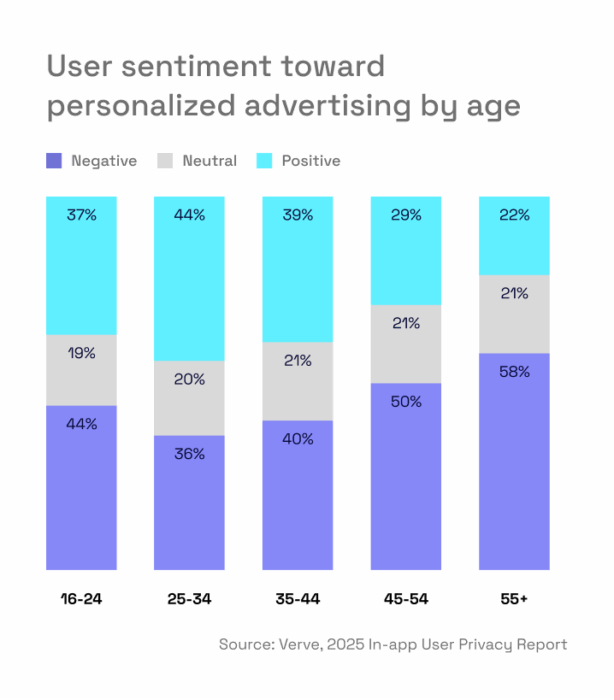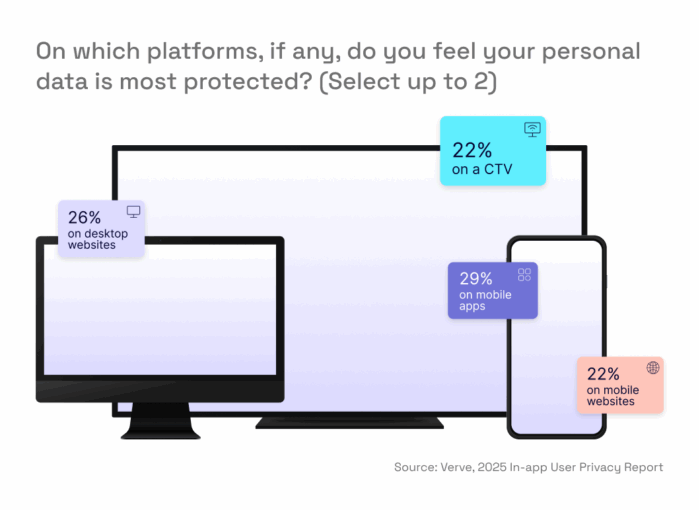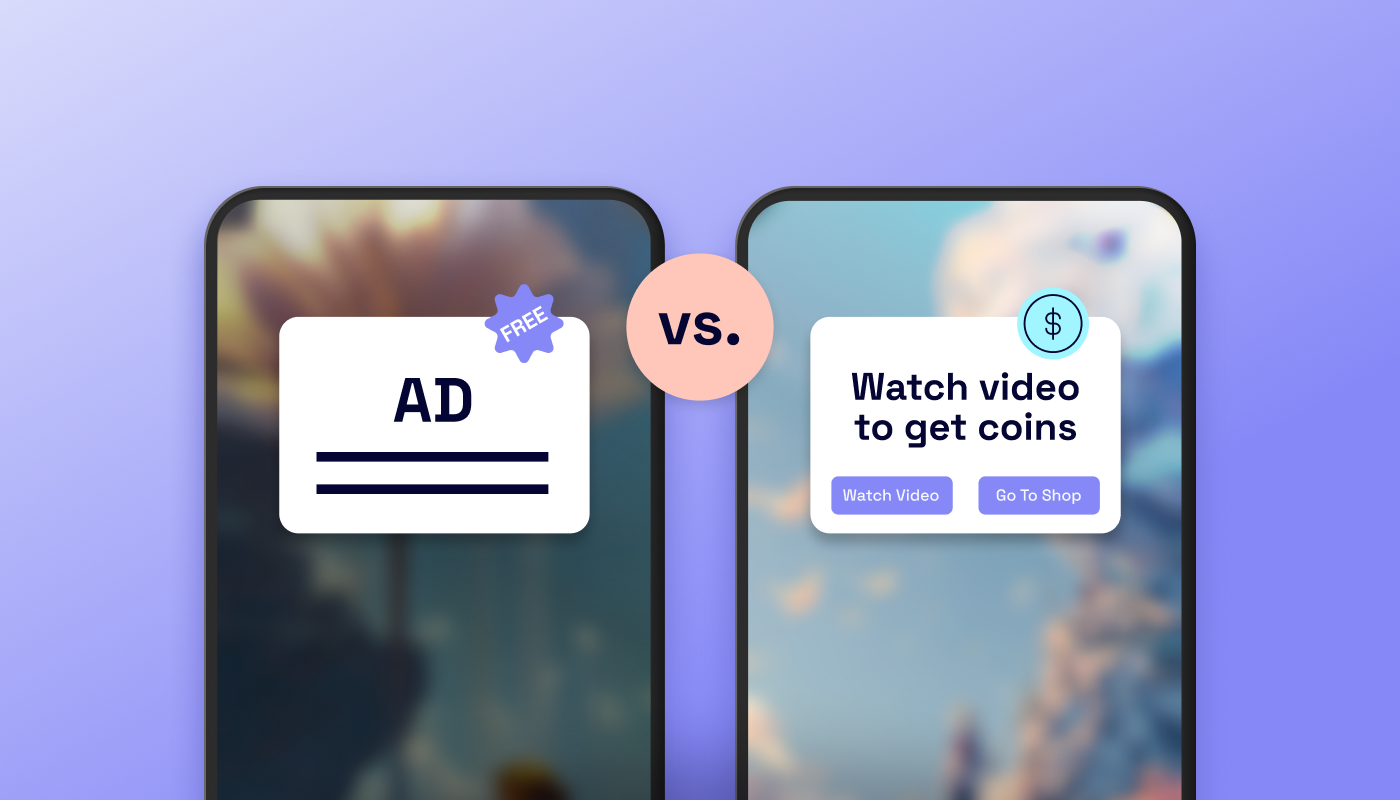For years, personalization has been the holy grail of digital advertising. Marketers believe that if an ad feels relevant, consumers will respond more positively. But as our 2025 In-App User Privacy Report shows, the reality is more complicated. Consumers want personalization, yet many remain uneasy about the data that powers it.
This “personalization–privacy paradox” is the tension at the center of advertising today. How publishers and advertisers navigate it will determine who wins consumer trust in the years ahead.
We surveyed 4,000 consumers in 2025 across the US and UK for our 2025 In-App User Privacy Report. The findings reveal users’ shifting attitudes towards data and their sophisticated privacy mindset. This post provides a preview of those insights, with a deeper dive available in the full report.
Personalization: Appreciated or intrusive?
Our survey results revealed a striking divide in how users feel about personalized ads.
On one hand, many consumers recognize the upside of tailored ads. But just as many expressed skepticism.
Positive
- “I feel appreciated and understood.”
- “The advertisements enhance my user experience.”
- “My data is being used in the correct way.”
Negative
- “I feel uneasy about how my data is being used.”
- “It makes me feel like I’m being watched.”
- “I feel my privacy has been breached.”
The emotional split highlights why personalization remains a double-edged sword. Deliver it well, and ads feel relevant and useful. Cross the line, and users feel surveilled.
Age and gender shape perceptions
Demographics tell a big part of this story. Younger audiences (ages 16–44) are far more open to personalized advertising. In fact, this group reported significantly more positive associations compared to older consumers.
By contrast, those 55 and older were the most resistant: 58% of this group chose negative responses when asked how they feel about tailored ads. This suggests that “one-size-fits-all personalization” is a myth. Brands need age-specific strategies if they want to build trust.

And the story doesn’t end there. Download the report to discover how gender influences ad perception.
Device and platform context matters
The personalization–privacy paradox also changes depending on where the ad appears. While mobile apps are generally considered the most trusted environment, consumers were more specific when asked where they’re most willing to share their data.

The most-trusted apps/platforms are:
- Streaming services (30%)
- Shopping apps (30%)
- Social media apps (25%)
- Music streaming platforms (21%)
Download the report for the full list, including the app categories that consumers trust the least.
What’s driving consumer trust? Users seem more comfortable sharing data in contexts where the value exchange is obvious. Streaming services, for example, provide personalized recommendations that feel useful. By contrast, data collection on sensitive or utility-driven apps can feel more invasive.
“Strategies around data collection need to be tailored to device contexts. For personalized advertising to work effectively across all groups, publishers and advertisers must be transparent about which data is collected and how it’s used. Clear communication and user-friendly privacy controls can help build trust, reduce resistance, and make personalization feel like a value exchange rather than a privacy trade-off.”
Morgan Jetto, SVP & GM of Marketplace, Verve
What this means for publishers
For publishers, the message is clear: consumers are open to data sharing, but only if the trade-off makes sense. The most effective approach is to be transparent about data practices and offer simple, intuitive privacy controls.
Rewarded ad formats or personalized recommendations are examples of how personalization can feel like an enhancement rather than an intrusion. The more publishers emphasize user benefit, the more they can reduce resistance and build loyalty.
What this means for advertisers
For advertisers, the findings highlight two imperatives:
- Tailor personalization by audience. Younger consumers may respond well to more dynamic personalization, while older audiences may require a softer, value-first approach.
- Consider context as much as content. Ads on streaming platforms may be welcomed, while the same level of personalization in a finance app may trigger privacy concerns.
Equally important is transparency. Personalized advertising should never feel like surveillance. Instead, advertisers must frame it as a fair trade: data in exchange for value. When users see the benefit (discounts, recommendations, or more relevant experiences), they’re more likely to engage.
Why this matters now
The advertising industry is at an inflection point. On one hand, personalization is proven to drive performance. On the other, consumer skepticism threatens to undermine trust.
Abandoning personalization is not the solution. Our research shows that we must refine it. Brands and publishers that emphasize relevance, respect user boundaries, and adapt strategies across demographics and platforms will be best positioned to build lasting trust.
The personalization–privacy paradox won’t disappear in 2025. But those who navigate it carefully will turn a challenge into a competitive advantage.







